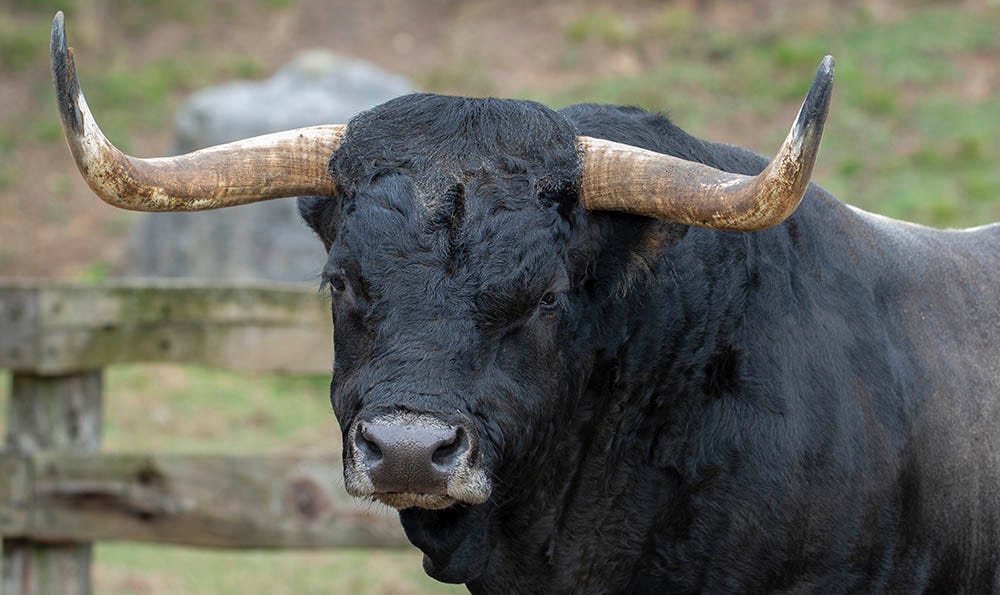Electric Fencing for Bulls

Bulls are large, aggressive animals that exhibit some unpredictable behavior. Differing from their female counterpart – the cow – bulls place a role in beef ranching and dairy farming. Bulls are massive with additional muscle and bone mass and can even be taller than cows.
Containing bulls safely is vital in smoothly running a farm. If normally kept segregated for breeding purposes, bulls or other aggressive livestock may become highly motivated to escape confinement, especially when nearby cows are in heat. It’s also important to deter bulls from other areas of your property where they can cause damage, harm other animals, or pose a threat to you and other humans.
In common instances, barbed and woven wire material have been used to contain these cattle. However, barbed wire is not recommended for use when containing livestock. Barbed wire is dangerous and can potentially hurt animals that meet the fence. Not to mention barbed wire fences require more maintenance and have a shorter lifespan than other, more efficient options.
Woven wire fences can be a good option for cattle in some situations but modifying the fencing with one or two strands of electric fencing will make the physical barrier stronger while also adding a psychological barrier aspect.
Containing Bulls
Electric fences are a great option for these animals. The electric fence can deter and condition with a harmless shock. Fences should be taller and more durable to handle an aggressive bull. For bull fencing height, the fence should be at LEAST 49 inches tall.
To contain bulls, maintain 3,000 – 4,000 volts on the fence line. Depending on vegetation and the length of the fence a low impedance fence charger is recommended. Using at least 5 to 6 wires is best. For more aggressive animals, you want the electrified fence to deliver a more intense shock to discourage them from going near the fence again.
Keep bulls separate from other animals, using more durable posts with thicker gauge wire and other stronger electric fence options. The longer the fencing, the more supplies and stronger charger and accessories you’ll need.
Perimeter Fencing
In general, at least 4 to 5 strands spaced approximately 10 inches apart are recommended for high-tensile fencing with a minimum fence height of 54 inches. Place the bottom wire at least 12 inches above the ground. At least 2 to 3 strands should be electrified. More wires will be necessary for bulls and aggressive breeds.
A standard electric fence alone should not be used as a perimeter fence. Zareba® aluminized steel wire is the best perimeter fencing option.
Rotational grazing
If rotationally grazing, T-posts and a 2 to 3-wire system can be used as cross-fencing to subdivide large pastures into smaller paddocks. Space wires 10 inches apart with the bottom wire approximately 20 inches from the ground. Fences should be at least 40 inches in height.
For a less permanent option, temporary electric fencing using step-in posts and 1 or 2 strands of Zareba® Polywire or Zareba® Polytape can also be used. Cross-fencing can then be electrified by tying into the "hot wires" of the main perimeter fencing.
Handling facilities
Wood or heavy wire panel fences are highly suggested for cattle handling facilities. In this case, electric fencing is not appropriate. Fencing heights for handling facilities should be at least 60 inches to prevent escape. Good visibility of fences is also important to reduce stress on animals and encourage livestock movement.
Note: If livestock get their heads between fence wires and receive a shock behind the eyes instead of in front of them, they tend to push into the fence rather than pull out. Proper wire spacing (a hot wire at the animal’s shoulder height) is important to safely contain your animals.
